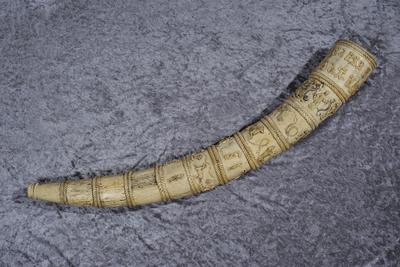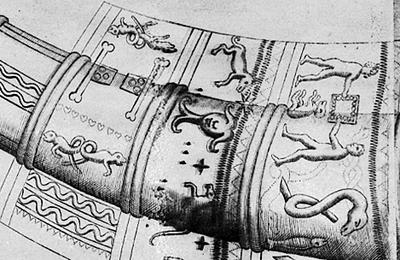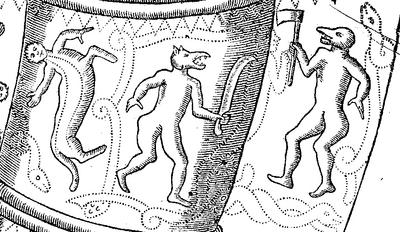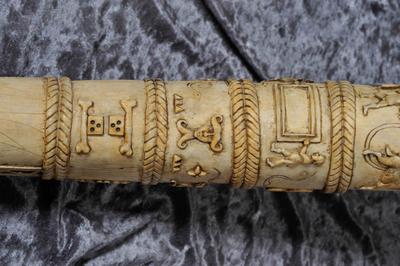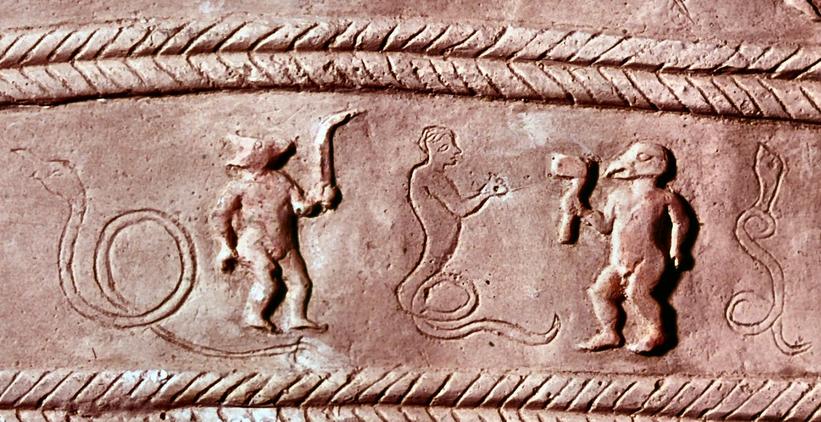
The Petersburg Horn
The horn in the Ermitage Museum in St. Petersburg is carved in ivory. All the images on the horn are taken from the long horn, and like the gold horn it is divided into bands with both plastic and line drawn shapes. Parts of the motifs from the gold horn are left out, and the characters are done in the style you liked to the middle of the 1600 century, with plastic forms and wavy hair. It is also looking at Worms plot, but it is even more marked in the horn from St. Petersburg. The gold horn is designed in a style used around the year 400, as we have tried to recreate it at the National Museums reconstruction of golden horns.
The horn has not always been at the Ermitage Museum. Until 1874 it belonged to the Russian collector Basilewski who lived in Paris, and whose collection was purchased by the Tsar. There is no information about where Basilewski had the horn. The similarity with the long golden horn was discovered in 1897. The National Museum got a casts of the horn, and it was described in the 'annals book of Nordic classical knowledge (’Aarbøger for nordisk Oldkyndighed’)’ in 1900.
The Petersburg-horn is probably made as a direct copy of the original horn. The carver probable used Ole Worms representations as model, do to some errors and misunderstandings in the Petersburg-horn, which can be explained in this way. In the third picture ring you can see two moving figures with animal heads, threatening a figure with a human torso and snake tail. At Worms picture the “victim” hose tail points to the left, but it is difficult to see because the figure is made by pricking into the horn, and also because the artist has placed it in the shade on the backside of the horn. If you look closely, you can see that its tail is facing left and continues under the care of the sword, and that there also are two intertwined snakes under a threatening being with an ax and bird head. At the Petersburg-horn the 'victims' tail is pointing to the right and replaces the two snakes that are completely left out.
In 1717 the details of Worms drawing was criticised by the priest George Sorterup. His reprimands included that the two bars in the image ring no. 7 which is riveted to the horn with square plates, mistakenly has received a form as bones from a dead. At the Petersburg-horn it is similarity with human bones even more pronounced than in Worms connector.
